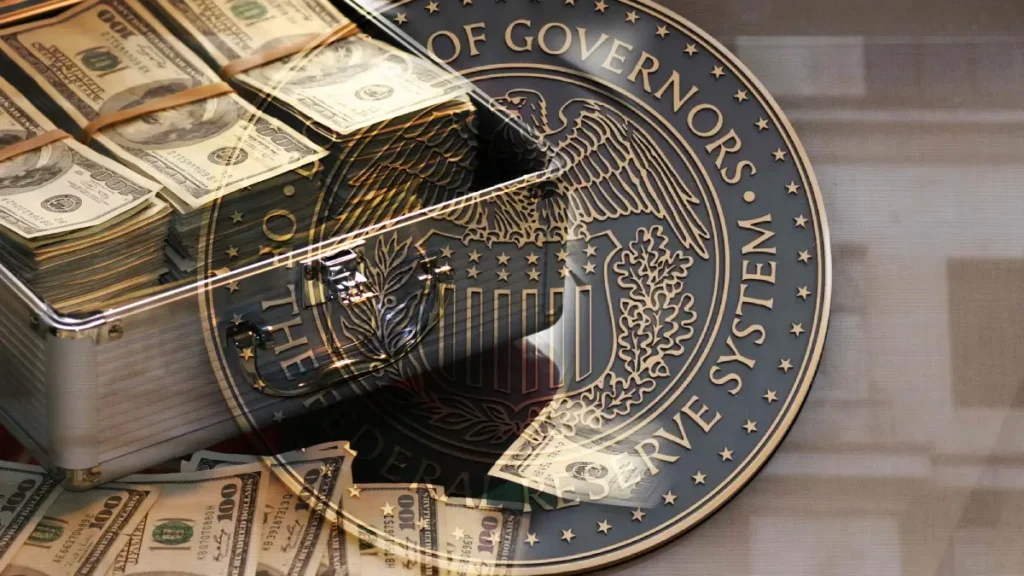Atlanta Federal Reserve President Raphael Bostic cautioned that if policymakers reduce interest rates prematurely, inflation might experience a “see-saw” effect.
He mentions in a report to the Financial Times on Sunday that the decline of inflation towards the central bank’s 2% target is expected to decelerate in the coming months.
After reaching its highest level in decades during the summer of 2022, US inflation experienced a notable decline over the second half of the previous year.
This decline has created conditions for rate-setters to contemplate reducing borrowing costs from the current 23-year high of 5.25 to 5.5 percent.
Bostic Urges Caution, Advocates Stability in Interest Rates
In an interview with the Financial Times, he explained that the cautious stance is driven by the uncertainty prevailing in the US economy.
Following the December policy vote, Bostic expressed his belief that interest rates should stay unchanged until after the summer.
As a voting member of the Federal Open Market Committee this year, Bostic anticipates a more gradual rise in inflation. He expresses the belief that the progression of inflation is likely to slow significantly, and there are concerns highlighted in the report that it might even come to a halt.
While acknowledging that price pressures decreased more rapidly than anticipated in 2023, the Atlanta Fed president maintains the view that inflation is expected to reach nearly 2.5% by year-end.
According to the Financial Times, he envisions that the Federal Reserve’s goal of 2% inflation may only be achieved in 2025.
Bostic emphasized the necessity for inflation to confidently return to the 2% target, stating, “It would be undesirable if we began easing, and inflation fluctuated like a see-saw, rising and falling unpredictably,” as reported by the newspaper.
Rising Shipping Costs Spark Urgency
According to the Financial Times, Bostic highlighted the importance of closely monitoring the recent surge in shipping costs. He attributed this increase to the disruption in traffic in the Suez Canal, a situation exacerbated by Houthis targeting vessels.
Data from Xeneta, a logistics research firm, reveals that the cost of shipping a 40ft container from the Far East to Europe has surged by almost 150 percent in the past month.
Bostic expressed curiosity about how the Middle East conflict and attacks on container ships might impact the cost structure for businesses in his district.
Despite unemployment standing at just 3.7 percent, he believed that the labor market’s strength was a factor preventing the Fed from shifting its focus from inflation to job creation.
Bostic shared with the newspaper that he finds it intriguing to observe how the Middle East conflict and attacks on container ships might impact the cost structure for businesses in his district.
In December, Bostic Had Predicted Potential Rate Cuts in Q3 of 2024
In a December interview with Reuters, Bostic indicated that the Federal Reserve could commence rate reductions “sometime in the third quarter” of 2024 if inflation aligns with the anticipated decline.
The current terms of the quantitative tightening program allow up to $60 billion worth of Treasuries and $35 billion of mortgage-backed securities to run off the balance sheet each month.
There are concerns that this policy might pose a risk of triggering spikes in funding markets as they grapple with absorbing high levels of debt issuance by the US government.
Bostic mentioned,
“Today, we haven’t observed any shifts in money markets indicating that we’re nearing a scenario with insufficient reserves. Clearly, at some point, there will be a signal that we’re approaching that threshold, and we’ll have to engage in some deliberation.”
Bostic shared that he is closely examining liquidity conditions, especially after some rate-setters suggested in December that the Federal Reserve might need to consider slowing down the reduction of its balance sheet.
